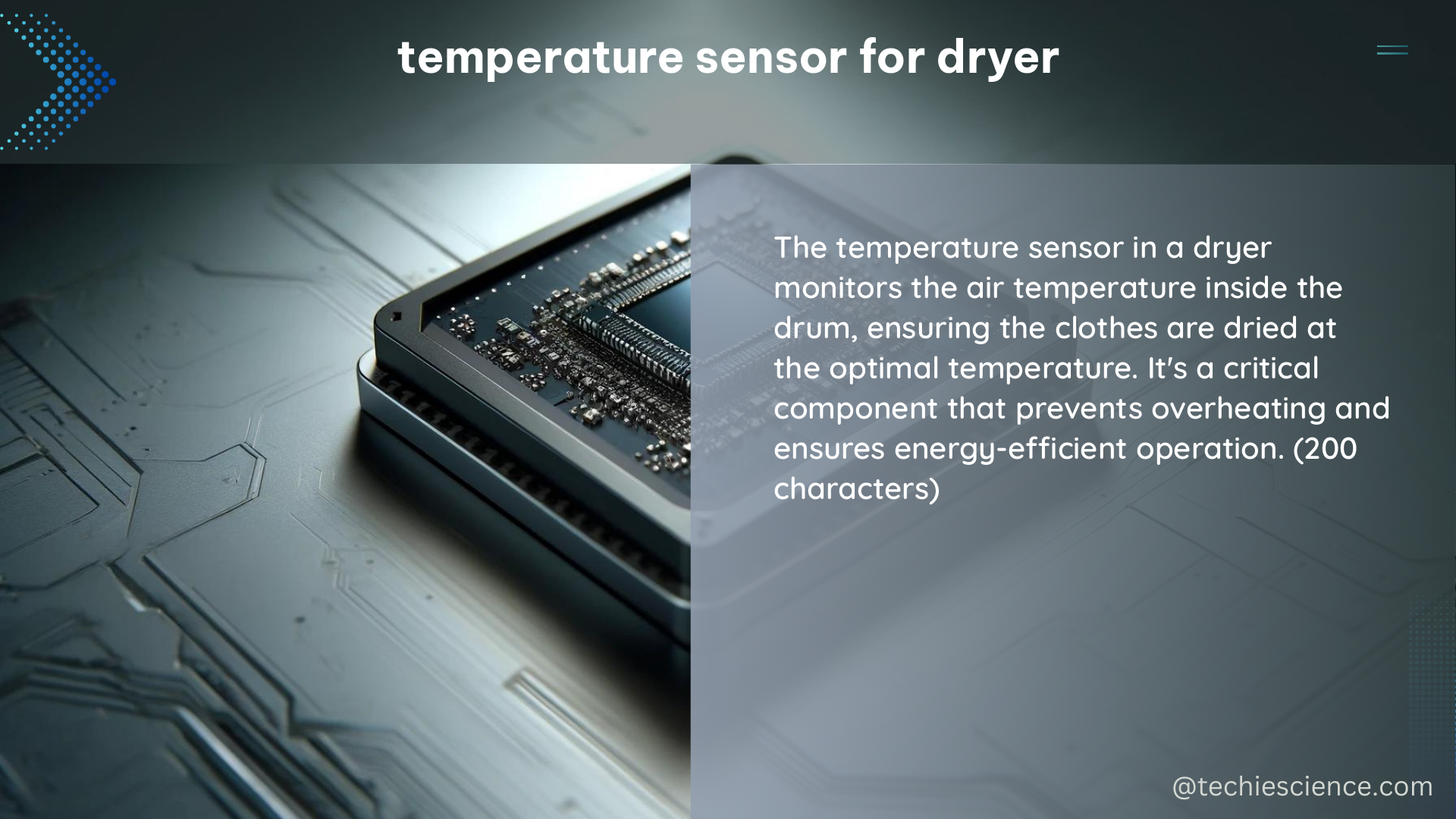The temperature sensor for a dryer is a crucial component that helps to determine the dryness of clothes by measuring the temperature inside the dryer. These sensors are designed to be low-cost, compact, and resistant to lint fouling, making them ideal for use in dryer applications.
Understanding the Role of Temperature Sensors in Dryers
Temperature sensors in dryers are typically installed in the exhaust ducts near the suction of the air blower. They are responsible for monitoring the temperature and relative humidity of the exhaust air, which are then used to calculate the water content of the air being expelled from the dryer. This information is crucial for determining the dryness of the clothes and ensuring that they are not over-dried, which can lead to excessive wear and tear.
Commonly Used Temperature Sensors for Dryers

DS18B20 Digital Temperature Sensor
The DS18B20 is a popular choice for temperature sensing in dryers due to its cost-effectiveness and compact design. This one-wire digital temperature sensor can measure temperatures with an accuracy of ±0.5°C, making it a reliable option for dryer applications. However, it may require calibration to improve its accuracy.
Calibration Process:
1. Subtract the raw sensor reading from the 12-bit equivalent of a reference reading.
2. Take the average of those residuals as the bin category.
3. This method helps to identify and correct any offsets in the sensor readings.
MAX30205 High-Accuracy Temperature Sensor
Another temperature sensor that is gaining popularity in dryer applications is the MAX30205. This sensor boasts a high accuracy of 0.1°C and a temperature resolution of 0.00390625°C, making it ideal for applications that require precise temperature measurements. The MAX30205 also has a small form factor, allowing for easy integration into dryer designs.
Humidity Sensors for Dryer Monitoring
In addition to temperature sensors, humidity sensors are also used in dryers to determine the dryness of clothes. These sensors can react much quicker than thermistors and provide more accurate readings. However, they require temperature readings to calculate the relative humidity accurately.
One example of a humidity sensor suitable for dryer applications is the HH-4030. This sensor can handle temperatures up to 185°F (85°C), making it well-suited for use in dryers.
Mounting Temperature and Humidity Sensors in Dryers
Mounting temperature and humidity sensors in a dryer can be challenging due to the high temperatures and forces of spinning. Here are some methods that can be used to secure the sensors:
- Heat-Resistant Duct Tape or Epoxy Goo: These materials can be used to attach the sensors directly to the dryer exhaust duct.
- Wiring to Existing Sensor: The sensors can be wired up to the existing sensor in the dryer, which senses resistance to detect wet clothes.
- Metal Box Enclosure: A metal box can be added to the outside of the dryer to mount the sensors, with holes drilled to allow air movement in and out of the box.
Sensor Calibration and Accuracy Considerations
Calibrating the temperature and humidity sensors is crucial to ensure accurate readings and prevent over-drying of clothes. The calibration process, as mentioned earlier for the DS18B20 sensor, can help identify and correct any offsets in the sensor readings.
Additionally, selecting sensors with high accuracy and resolution, such as the MAX30205, can further improve the reliability of the dryer’s automatic termination algorithms, leading to energy savings and better care for the clothes.
Conclusion
Temperature sensors are a critical component of dryers, playing a vital role in determining the dryness of clothes. By understanding the different types of sensors available, their calibration requirements, and the challenges of mounting them in a dryer, you can ensure that your dryer is equipped with the most reliable and accurate temperature monitoring system.
References:
– Triage Step for Cheap DS18B20 Temperature Sensors
– Patent: Clothes Dryer with Moisture Sensor
– Measure Clothes Dryer Moisture to Determine When Clothes are Dry
– Clothes Dryer Moisture Sensor Technology Assessment

The lambdageeks.com Core SME Team is a group of experienced subject matter experts from diverse scientific and technical fields including Physics, Chemistry, Technology,Electronics & Electrical Engineering, Automotive, Mechanical Engineering. Our team collaborates to create high-quality, well-researched articles on a wide range of science and technology topics for the lambdageeks.com website.
All Our Senior SME are having more than 7 Years of experience in the respective fields . They are either Working Industry Professionals or assocaited With different Universities. Refer Our Authors Page to get to know About our Core SMEs.